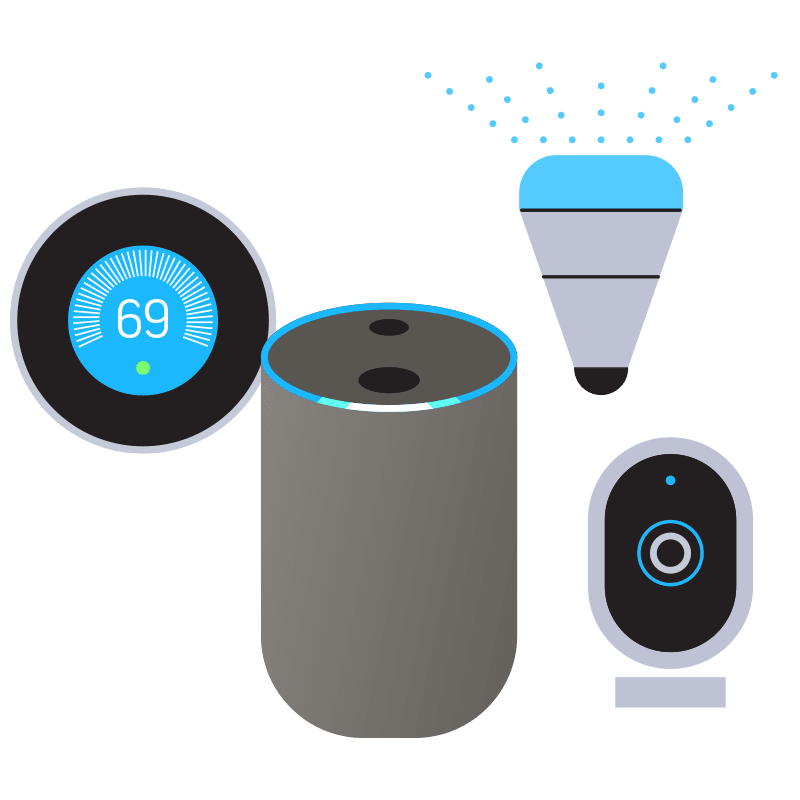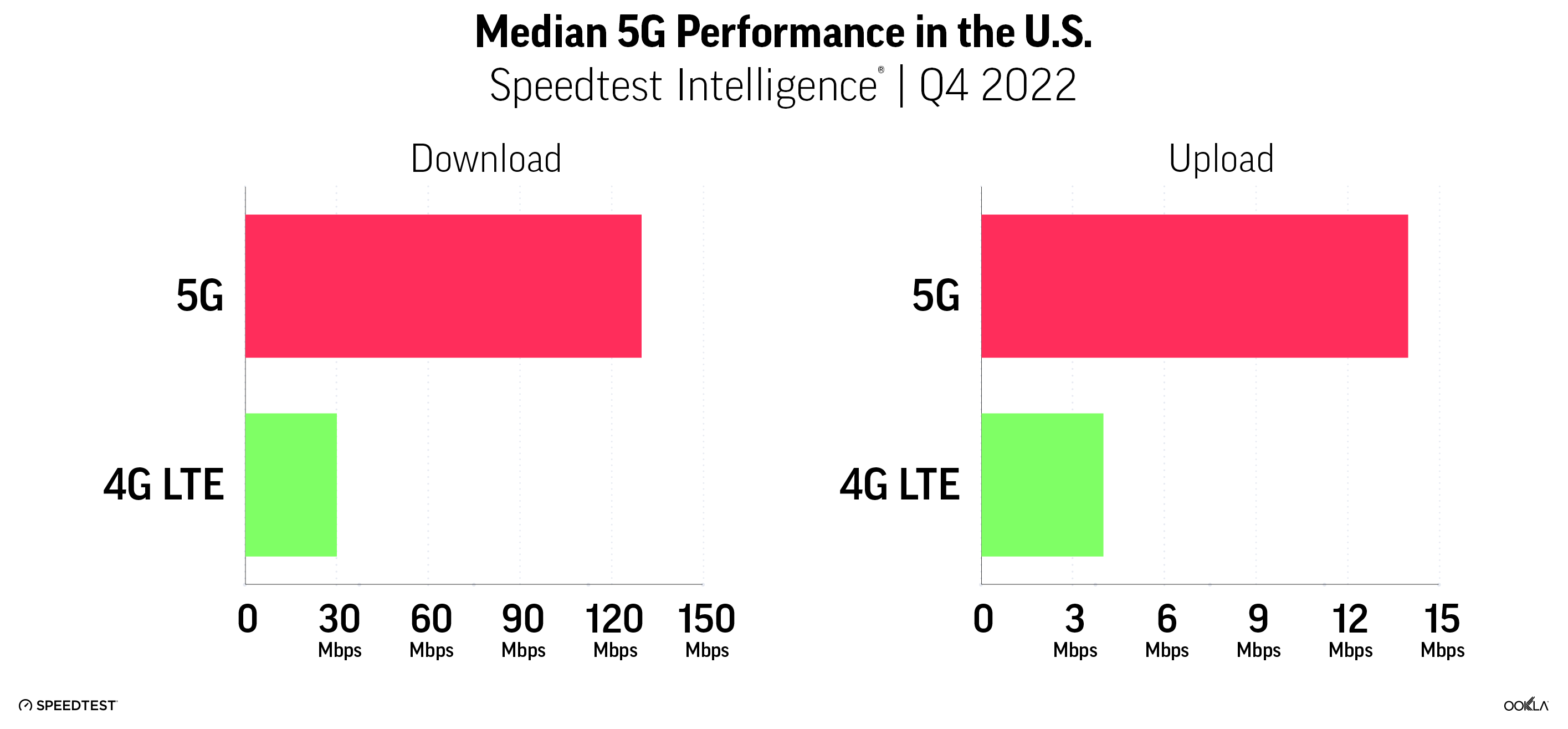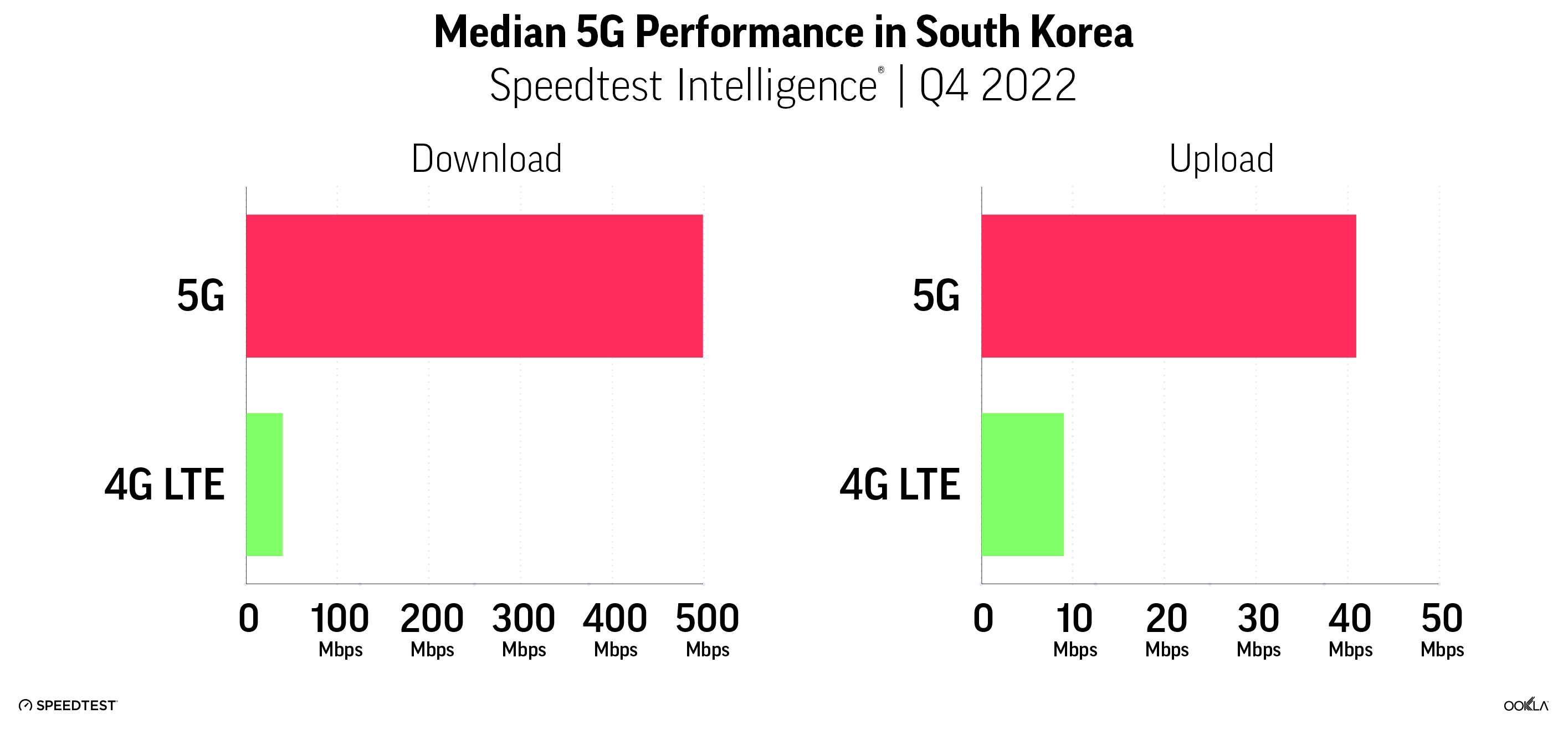FAQ: What is 5G? And Everything Else You Always Wanted to Know about 5G
Mobile operators and fixed broadband internet providers (ISPs) are beginning to offer 5G connections around the world that provide blazing fast speeds for consumers. But what is 5G and why should you consider investing in 5G-enabled devices? How much faster is 5G than 4G LTE? Why is 5G so fast? What can you do while you’re on 5G? Ookla® has created a short FAQ for all of your burning questions.
What is 5G?
5G refers to the fifth generation of wireless technology, which was preceded by 4G LTE, 3G, 2G, and 1G. With a theoretical max download speed of 20 Gbps and a 10 Gbps upload speed (though don’t expect those just yet), 5G technology is on the forefront of fast wireless internet connectivity with ultra-low wireless latency. In order to better understand what 5G is, let’s first look at its predecessors:
1G
2.4 Kbps or
2,400
bits per second1G
First commercially introduced in 1979 in Japan by Nippon Telegraph and Telephone, 1G was an analog wireless technology that allowed users to talk to each other using mobile devices. 1G had many different protocols being used across the world and has for all intents and purposes been sunsetted in almost all parts of the world.
2G
40 Kbps or
40,000
bits per second2G
Launched in 1991, 2G marked a huge step forward in mobile technology and was standardized by the Global System for Mobile Communications (GSM). Networks became digital instead of analog, laying the groundwork for mobile internet as we know it today. 2G introduced encrypted voice connections, SMS and MMS messaging, and more concerted intention about the use of radio frequency spectrum. Original 2G offered a theoretical maximum speed of 40 Kbps — almost incomprehensible compared to today’s standards, but world-changing back in the 1990s.
3G
2 Mbps or
2,000,000
bits per second3G
3G was the first major step in mobile technology as we use it today, introducing mobile data and internet browsing. Developed with International Telecommunication Union (ITU) standards, 3G was introduced in 2001. Original 3G offered a theoretical download rate of about 2 Mbps (though later updates got up to over 10 Mbps), and is still used around the world today; though is increasingly being upgraded for 4G LTE and 5G technologies.
4G
1 Gbps or
1,000,000,000
bits per second4G LTE
Commercially available in 2009, 4G Long Term Evolution (LTE), has redefined how we use our mobile devices and connect with the world. Officially standardized by the ITU in 2010, 4G LTE offers real world speeds of up to 100 Mbps (with a theoretical limit of 1 Gbps) and serves as the backbone to many current day networks. 4G LTE opened up the world to mobile broadband speeds, offering users the ability to stream high-definition video and video call other users.
5G
20 Gbps or
20,000,000,000
bits per second5G
Initially deployed in 2019, 5G is the first mobile technology that can truly replace fixed broadband internet connections. Due to increased bandwidth, better use of radio frequencies, massive multi-input, multi-output (MIMO) mobile signal transmitters, edge computing processing, low latencies, and other network evolutions, 5G has countless applications that extend beyond traditional mobile devices, particularly in the realm of IoT like augmented reality, connected vehicles, , advanced agricultural uses, and much more.

Why is 5G important?
What makes 5G important is the speeds and capabilities it offers. 5G provides an alternative to fixed broadband network connections, particularly in rural areas, while increasing network capacity to deliver content more quickly and connect more devices while providing lower latency. Expanded capacity is great for consumers, especially for folks living in dense urban areas that can serve more people and IoT devices — and even for more rural folks outside the reach of traditional fixed networks, who may rely on mobile or fixed wireless access (FWA) technology for their home internet. That’s huge for currently under-served local economies, allowing people worldwide to better connect, access online services, and share ideas around the globe.
The increased bandwidth of 5G also allows new use case applications that depend on large data transfers like a virtual metaverse where people can meet online using augmented reality (AR) and virtual reality (VR), smart cities that can direct traffic flows or connect people to services, connected vehicles (and potentially self-driving cars in the future), advanced logistics, machine automation to speed manufacturing and distribution, and even medical applications to monitor health issues or perform remote surgeries. 5G opens up a connected world on a level like we’ve never seen before, and will become increasingly important in our everyday lives.
How much faster is 5G than 4G LTE?

Based on theoretical speeds, 5G has the potential to be massively faster than 4G LTE at 20 Gbps to 1 Gbps. While theory is far from reality for almost every mobile user, during Q4 2022 in the United States, 5G was at least 330% faster in practice at 133.47 Mbps over 5G to 30.28 Mbps over 4G LTE. However, 5G and 4G LTE speeds vary dramatically around the world.

For example, South Korea, which has some of the fastest 5G in the world, had a median 5G download speed of about 496.63 Mbps to a 4G LTE speed of 43.10 Mbps, or roughly 10x faster during Q3 2022. Speeds vary across the world due to a host of factors, including different chipsets and CPUs in mobile devices, 5G investments by governments and mobile operators, different 5G spectrum allocations by operator, 5G Availability, the number of 5G deployments, and other differences, including mobile 5G plans, which may limit a user’s bandwidth.

As more locations embrace 5G, one thing should be certain: Speeds will increase and 5G technology should become cheaper to implement, which should carry the costs down to consumers for more affordable and accessible 5G connections.
Why is 5G so fast?
5G is fast for a few reasons, but three major evolutions stand out:
Radio frequency spectrum
For as long as we’ve had mobile devices, radio frequency has played a major role in facilitating mobile connectivity and 5G utilizes all three core spectrum bands.
- 6 GHz – 40 GHz high-band frequencies including millimeter wave (24 GHz – 40 GHz) for close, dense areas and very fast speeds;
- 1 GHz – 6 GHz mid-band frequencies, which includes the sweet spot C-Band frequencies (4 GHz – 8 GHz), that provide a balance of fast speeds and range; and,
- <1GHz low-band frequencies, such as 600 MHz, which transmit long-range bands that have slower (but solid) speeds.

Spectrum is limited, which makes it a highly sought-after asset, and many countries hold spectrum auctions to see who will be able to obtain long-term leases of certain bands of spectrum. Some of these dedicated bands may also already serve 2G, 3G, 4G LTE, and other radio communications for technologies like satellites or aerospace, and can be “refarmed” to become standalone 5G networks.
Massive Multi-input, Multi-output (MIMO)
MIMO has been a core component of telecommunications for a while now, but massive MIMO in 5G technology ratchets it up a few notches. Adding many antennae to 5G deployments, MIMO utilizes algorithms to better increase the bandwidth of the network — raising the number of mobile devices a deployment can host and the amount of data that can be transferred simultaneously — as well as increasing the efficiency of a 5G deployment.
Edge computing
Edge computing refers to network architecture that places computing power closer to data sources to speed up connectivity. In real terms, that means 5G service providers are placing routing algorithms and localizing network cloud computing closer to network deployments to help lower the latency of your connection. For 5G, edge computing is a huge deal and contributes to why 5G often sees lightning fast connectivity and extremely low latencies, particularly in high-band mmWave connections.
How does 5G affect latency?
One of the biggest challenges of mobile networks is latency (sometimes called ping), which measures how quickly your device gets a response after you’ve sent out a request. A low latency means the server is responding quickly to your request whereas a high latency means a slow response. Latency is particularly affected by distance — if your device is trying to communicate with a server across the street, you’ll likely have a lower latency than if you’re trying to communicate with a server on the other side of the world.
However, latency is much lower in 5G networks than even 4G LTE networks because of the introduction of edge computing, discussed above. With more and closer edge computing servers, data can be transferred more quickly and be more responsive. That’s a huge development for users who need low latencies, particularly gamers, who need low latency to gain a leg up while playing multiplayer online games.
Can I get 5G where I live?
5G is spreading like wildfire across the world, especially as deployment, technology, and installation costs start to lower — however, it’s still only in 128 countries as of December 2022, and not yet available in all parts of those countries even. For a detailed view of where you might expect to see 5G, check out the Ookla 5G Map™ to find where the 125,000+ 5G deployments are.
Does my operator have 5G?
If you see a 5G deployment in your area, zoom in on the Ookla 5G Map to see if any of your local operators are offering 5G mobile connections. Alternatively, you can download the Speedtest® app for iOS and Android and go to the Maps tab to see which operators might have 5G.
5G is off to a fast start and Ookla will be there monitoring its evolution
With 5G If unlocking the internet’s potential for many people around the world, Ookla has already been monitoring 5G connectivity, looking at the state of 5G worldwide in 2022, determining how fast the new Apple iPhone 14 and Samsung Galaxy Z Fold4 were over 5G, and even determining the fastest 5G devices in select markets during Q3 2022.
While we wait for fresh data, take a Speedtest to determine how fast your broadband or mobile connection stacks up against averages in your city or region using the Speedtest Performance Directory™.